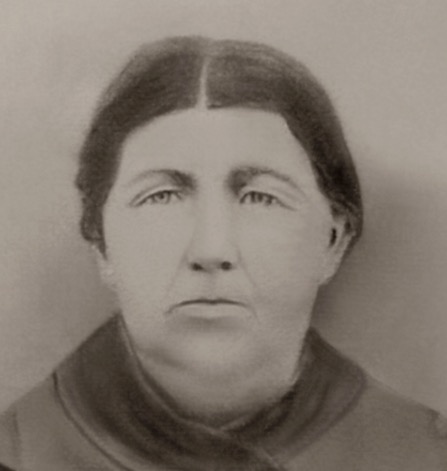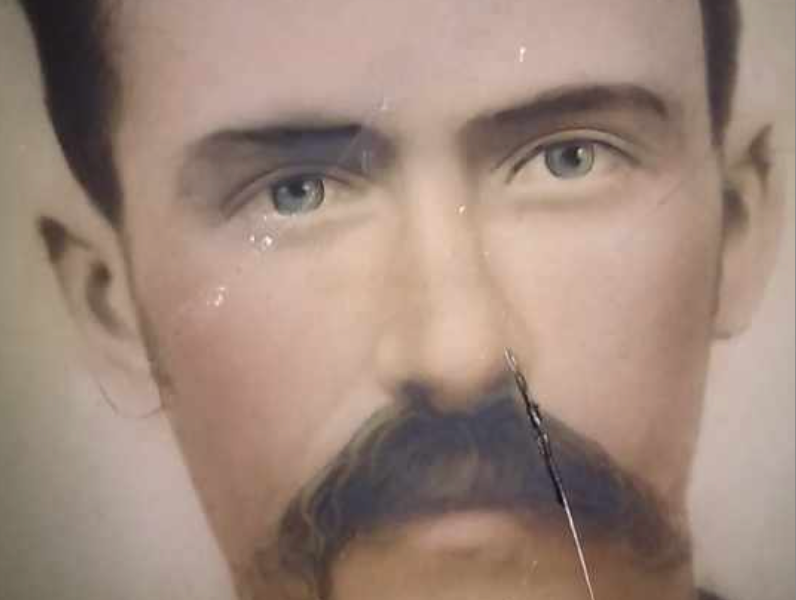As I looked over the single sheet of paper that represented John Monroe Ganus’s life, I felt disappointed. The form had been dutifully filled out by someone, years before I was even born, and although it gave me a few names, dates, and places, it left me with many questions. I wanted to know more than the bare facts; I wanted to know who John really was. What was life like for him? What had he accomplished? This desire propelled me into years of research and although some questions still remain, I finally feel that I have become acquainted with John.
John was born 16 October 1826 in Monroe County, Georgia. In reality, he was born a Gurganus, but for unknown reasons, his father, James, shortened the name to simply Ganus by about 1840. That month was part of a particularly warm fall (1) and so there was fear that the long warm season would bring with it the dreaded “fall fevers, (2) which often proved fatal.
At the time of John’s birth, his family consisted of his parents and a two-year-old sister, Mary. Over the next eight years, John would gain two more sisters, Margaret and Rebecca. It wasn’t until ten years later that a brother, David, joined the family. So, for ten years, John was an only son with three sisters. I can only imagine how much he was mothered by them all. Over the years, the family would grow to include Jackson, James, Calloway, Martha and Addison.
John was fortunate to live near his grandfather, David Gurganus, who was known as a Revolutionary War Soldier. John’s paternal Aunt Ellen also lived close by and although his Uncle David Gurganus lived in South Carolina, records indicate that David Jr.’s family visited. During John’s early years, he was part of a typical Southern extended family living in close proximity to each other.
Although initially the family lived in Monroe County, the county lines were adjusted and the family eventually found themselves in Bibb County. Thanks to many streams, ponds, lakes and rivers, including the large Ocmulgee River the area was green and fertile and it was a great place to farm.
As a son of a farmer and the oldest son of ten children, it is likely John learned to work hard from the time he was young. Although a large family meant more help on the farm, it also meant more work was needed to provide for the family’s needs and so most southern families learned to work hard together. When John was 14, his father reported that they had one horse, one cow, 15 pigs and that year his father sold about 300 bushels of Indian corn and 450 bales of cotton, along with 40 bushels of sweet potatoes. Tax digests seem to imply that for the most part, his father James did not own land and, despite a great deal of research, no land deeds have ever been located for James. Unfortunately, no will or probate has been located either. By all appearances, John’s parents never really prospered and basically the family just “got by.”
If John was typical of the boys of that era and place, when he wasn’t helping on the farm, he was out hunting in the forested area surrounding Macon or fishing or swimming in one of the many creeks or rivers.
Living on the Georgia frontier had many challenges, which included conflicts with Native Americans. As treaties were signed and land was taken to create new counties, there were many conflicts between Native Americans and the “new” land owners. Court documents and newspapers are full of accounts detailing the steps taken to forcefully remove the Native Americans from their land and the violent acts of retaliation experienced by many of the families, particularly those living on newly acquired lands.
By 1840, when John was in his early teens, his family moved 73 miles northwest of Macon in Bibb County, to the Fayetteville area of Fayette County. At that time, the town of Fayetteville had two churches, two schools, three stores, five barrooms, and a printing office, along with a Division of the Sons of Temperance. The population was about 7,500. (3) I can’t help but notice the ratio of bars to churches.
John remained with his family until the day he moved out on his own. Naturally, it was at that point that I began to find records for John and then, much like a photo coming into focus, a picture of who he was began to emerge and I finally began the process of becoming acquainted with John. Follow me next week as I share the next phase of his life.
Copyright © Michelle G. Taggart 2017, All rights reserved
1. Macon Telegraph, Nov 7, 1826 page 3 accessed on Galileo.usg.edu
2. According to the Georgia Journal of Medicine and Surgery, Volume 2, page 169, accessed on Google books, “fall fevers” was malaria.
3. The History of Fayette County, 1821-1971, published by the Fayette County Historical Society, page 20.






I noticed the ratio of bars to churches too. But the Sons of Temperance were there to help keep everyone in check, I suppose.
What a good job of helping readers picture life in the early 1800s.
Michelle, this is a wonderfully descriptive look into John's life. Your words have painted a clear picture.
Michelle, I'm looking forward to following along on your genealogy journey because you've fleshed out this ancestor so vividly that he's brought to life. Now you've got me wondering about "fall fevers"?!
Marian, I was amazed out how many hits I got for "fall fevers" when I googled it. Apparently it was fairly common in the Southern states when it was warm and there was a lot of water.
Thanks for your kind words!
Thanks Wendy!
Thank you. It takes a little time as you know, but finding those little details sure helps me understand the times.
Wow. This got me excited about our history in a way that I have not felt in a while. Thank you. Beautifully written.
Thank you John. There will be a lot of twists and turns in the story, but first I have to lay the foundation of his story.
I love all the background details also, Michelle. Some of my recent newspaper research uncovered so many temperance societies and meetings and arrests for public drunkenness but I don't know how many bars there were in the nearest towns. I'm curious now, I'll have to look at the directories.
I hope you are able to find that information. I absolutely love newspapers and can really get lost in them.